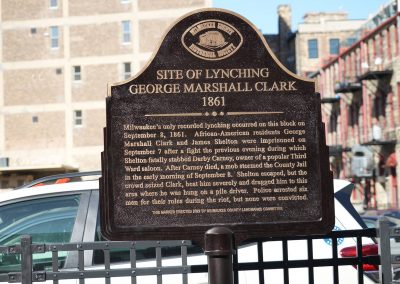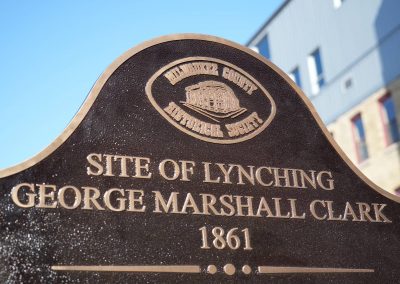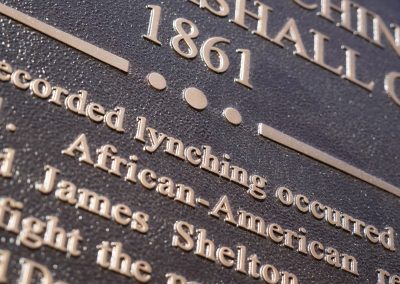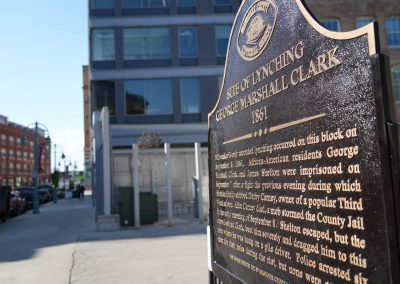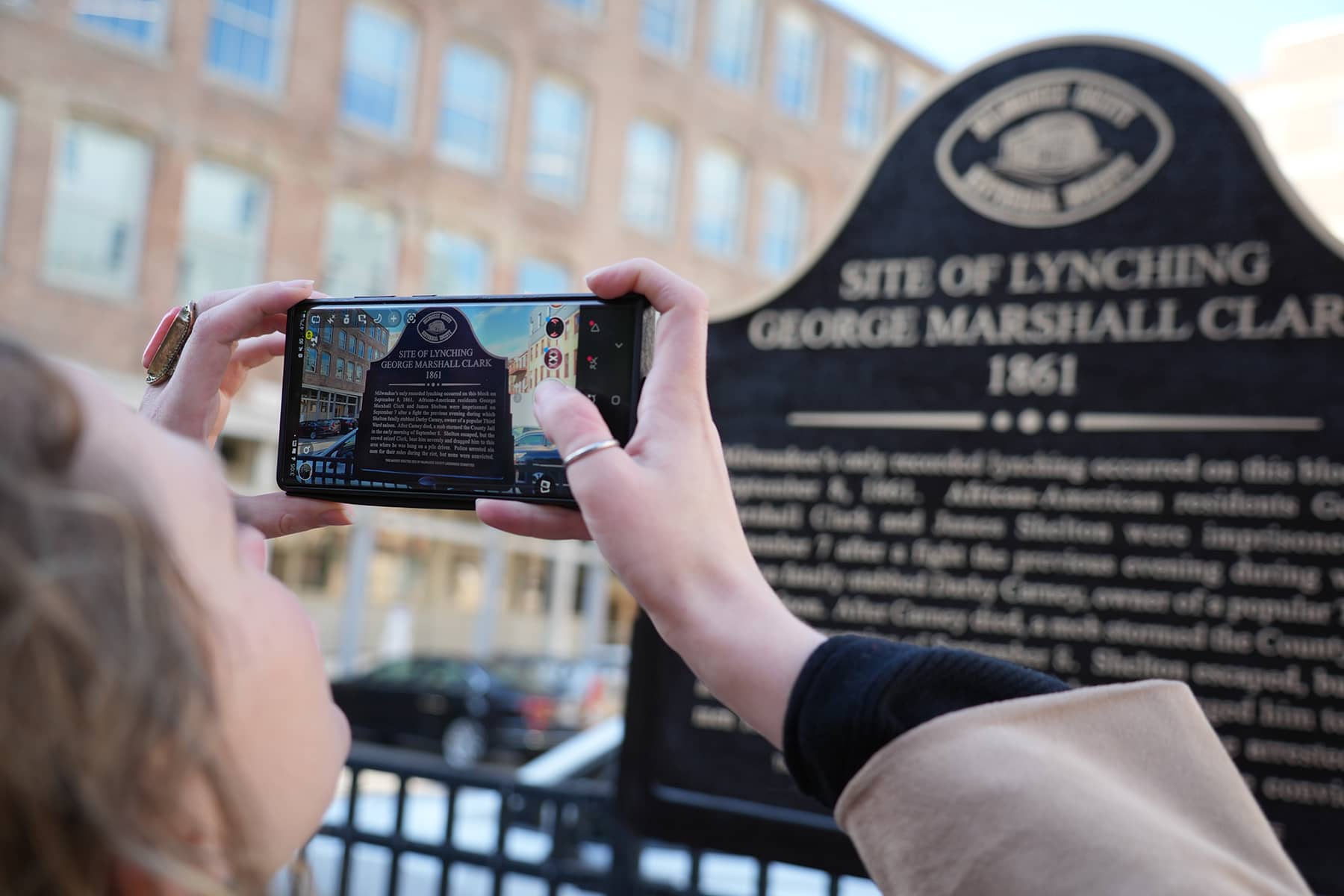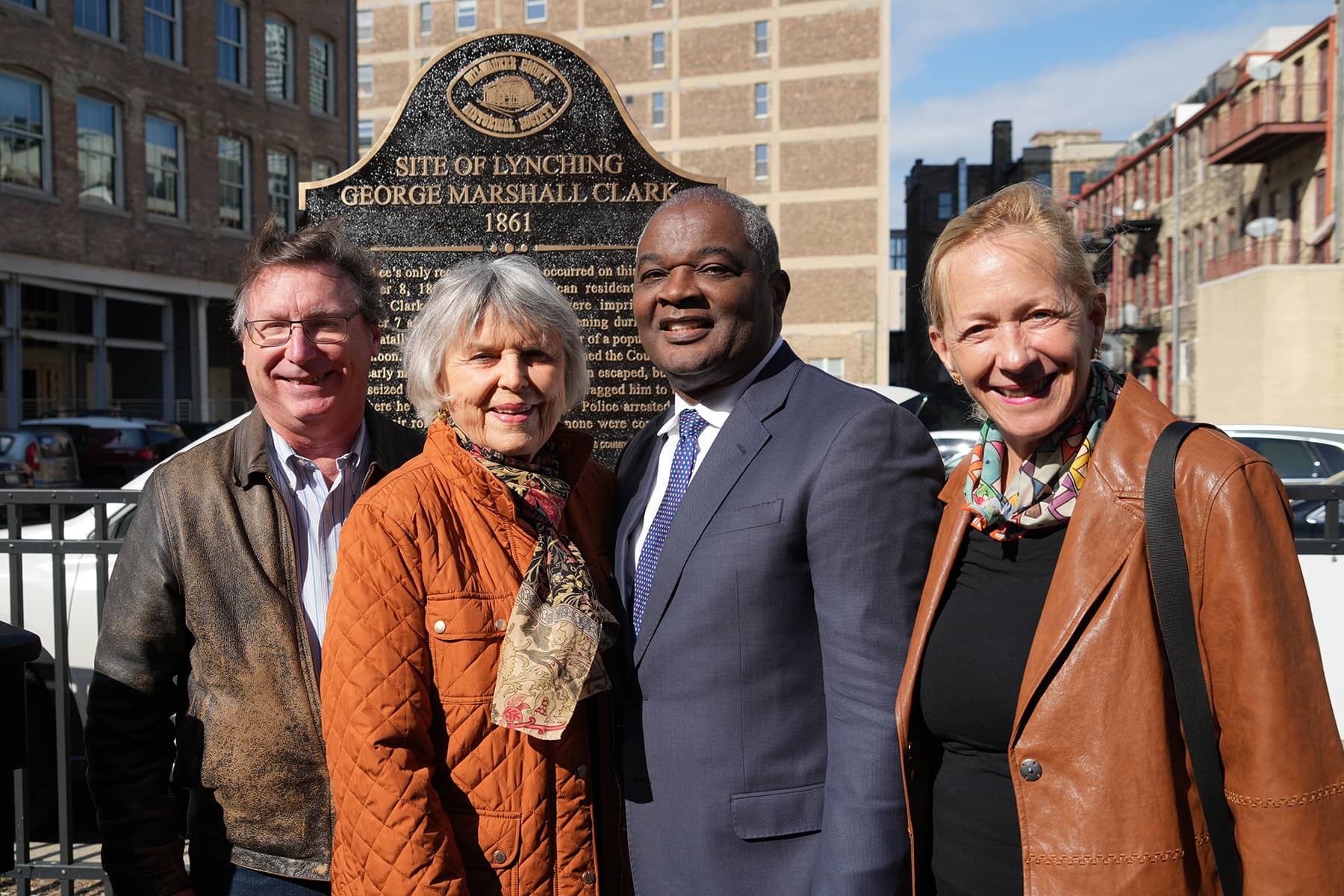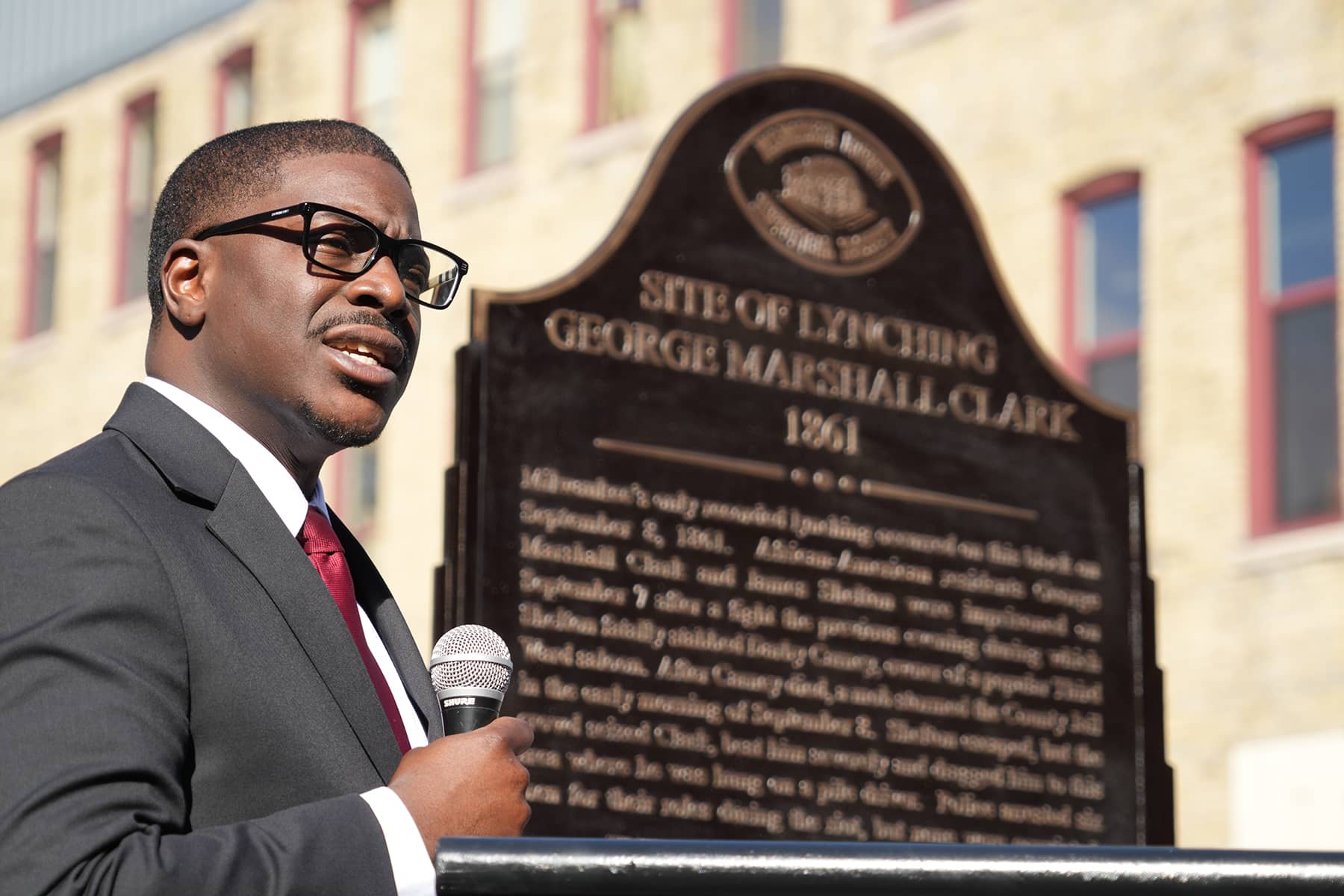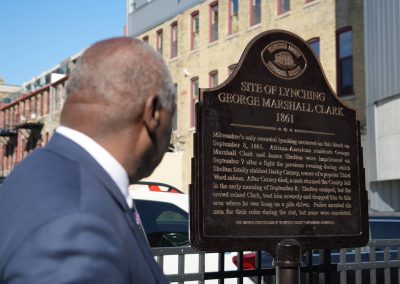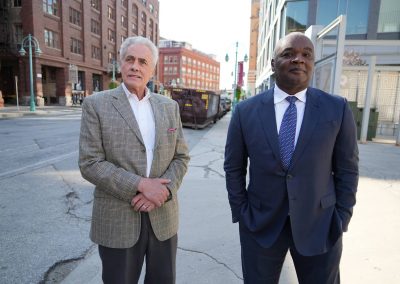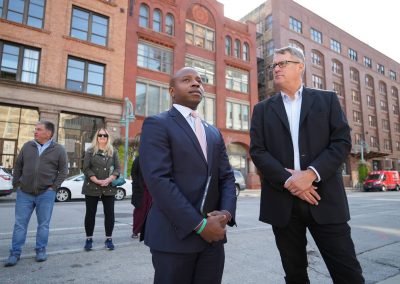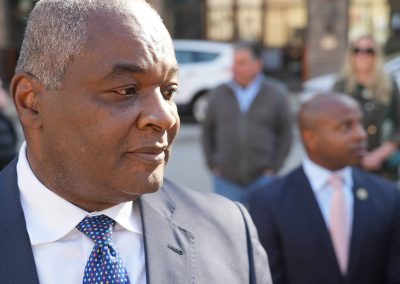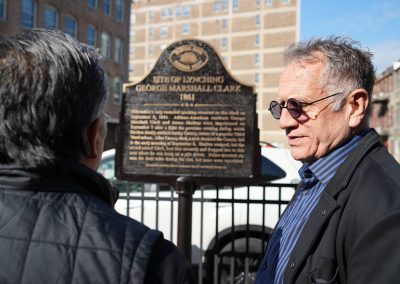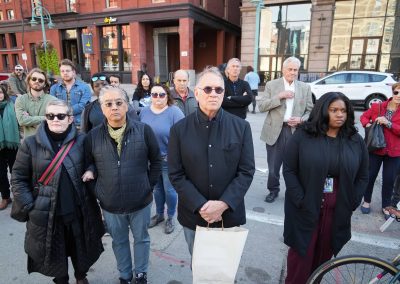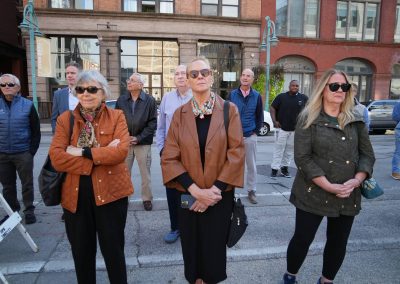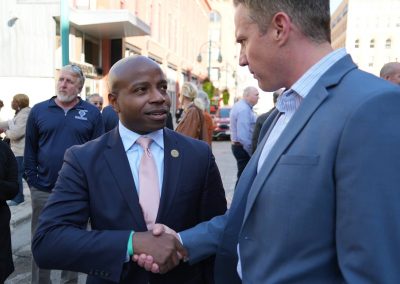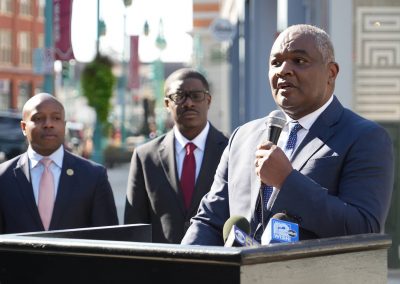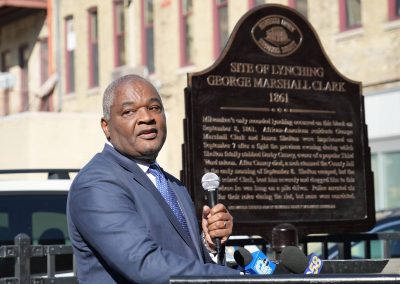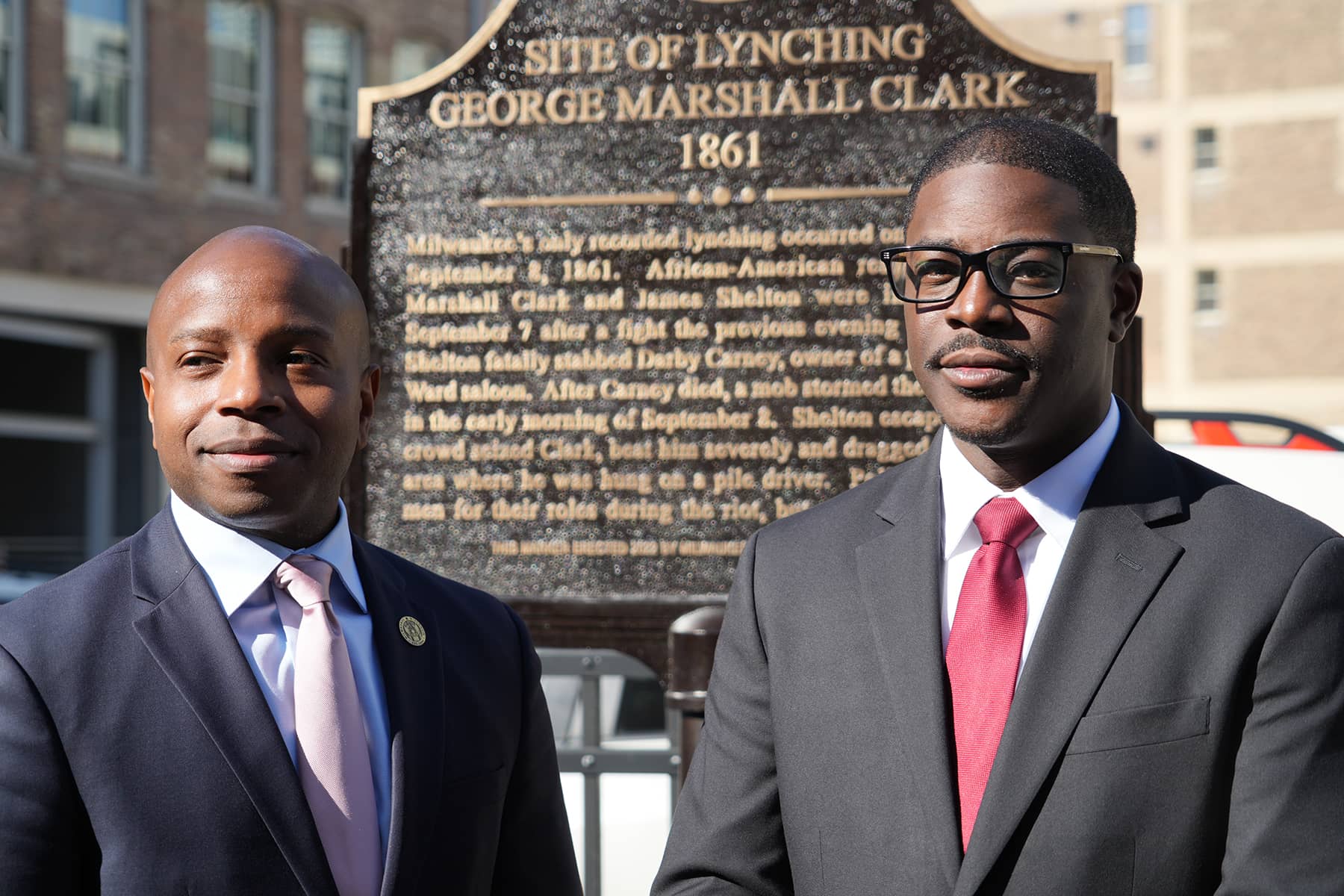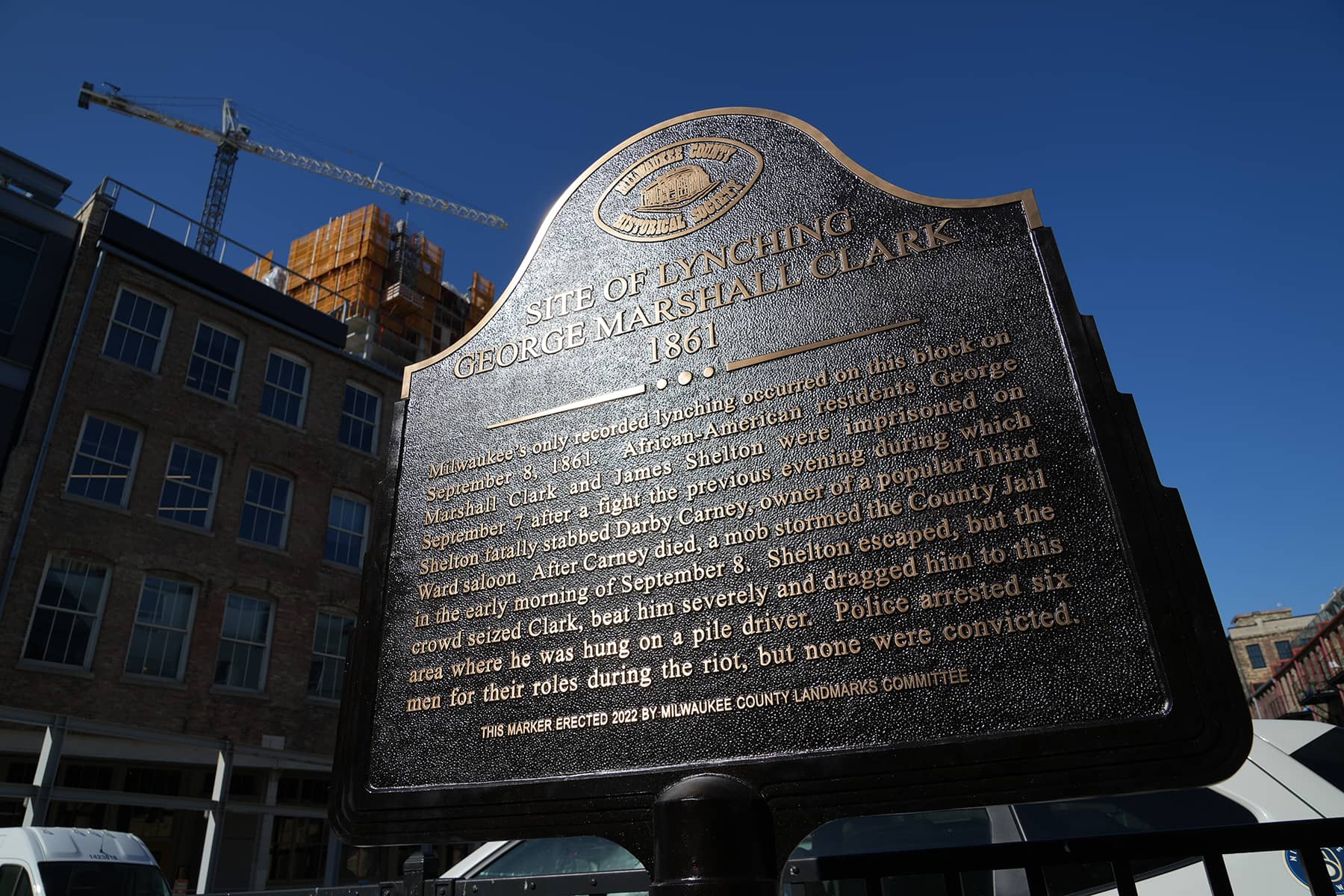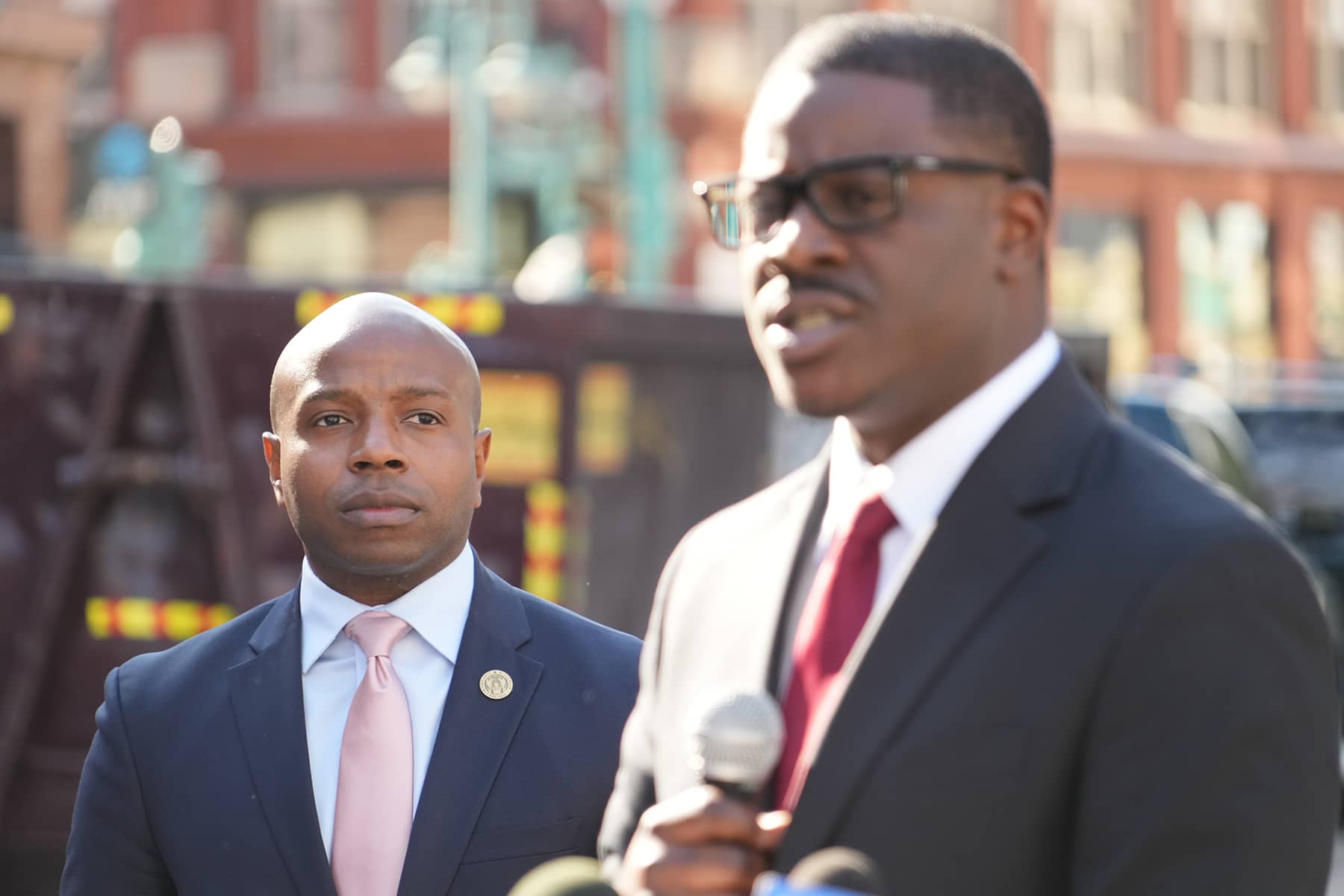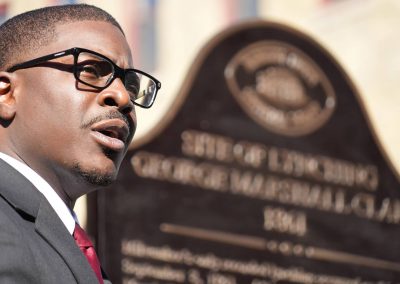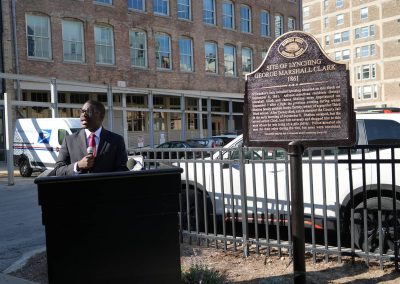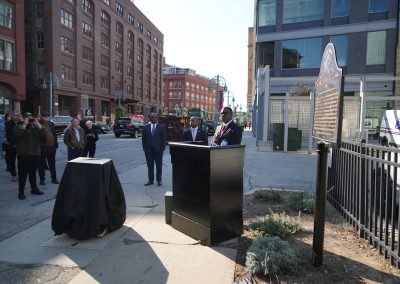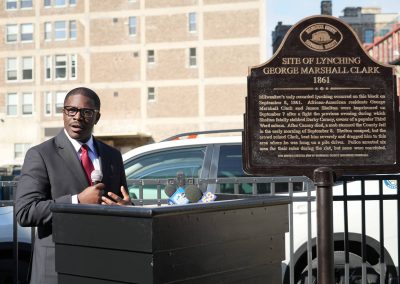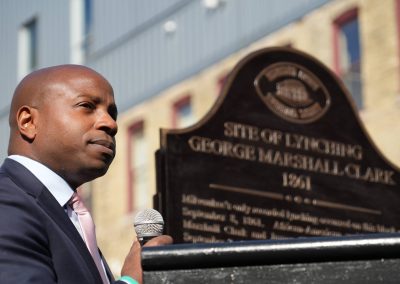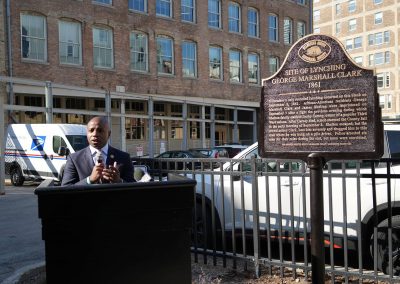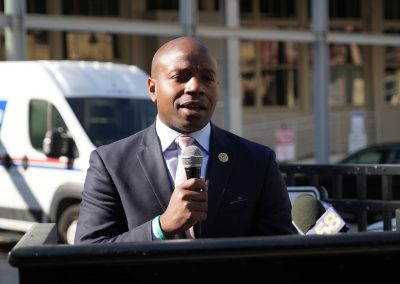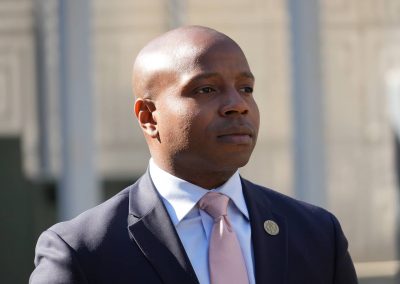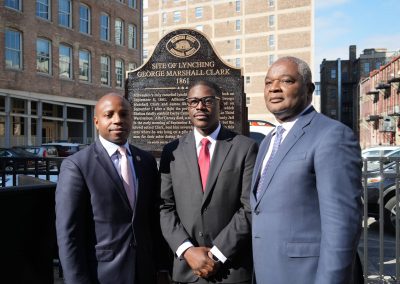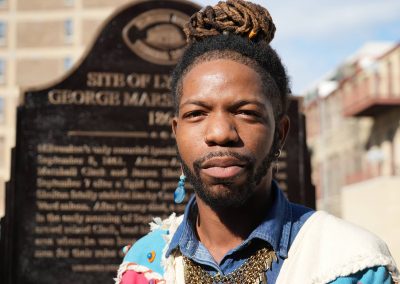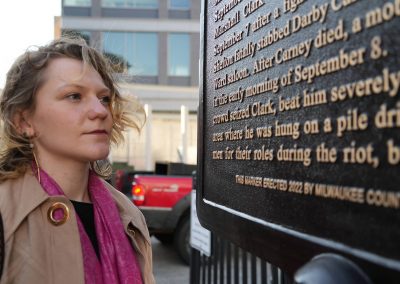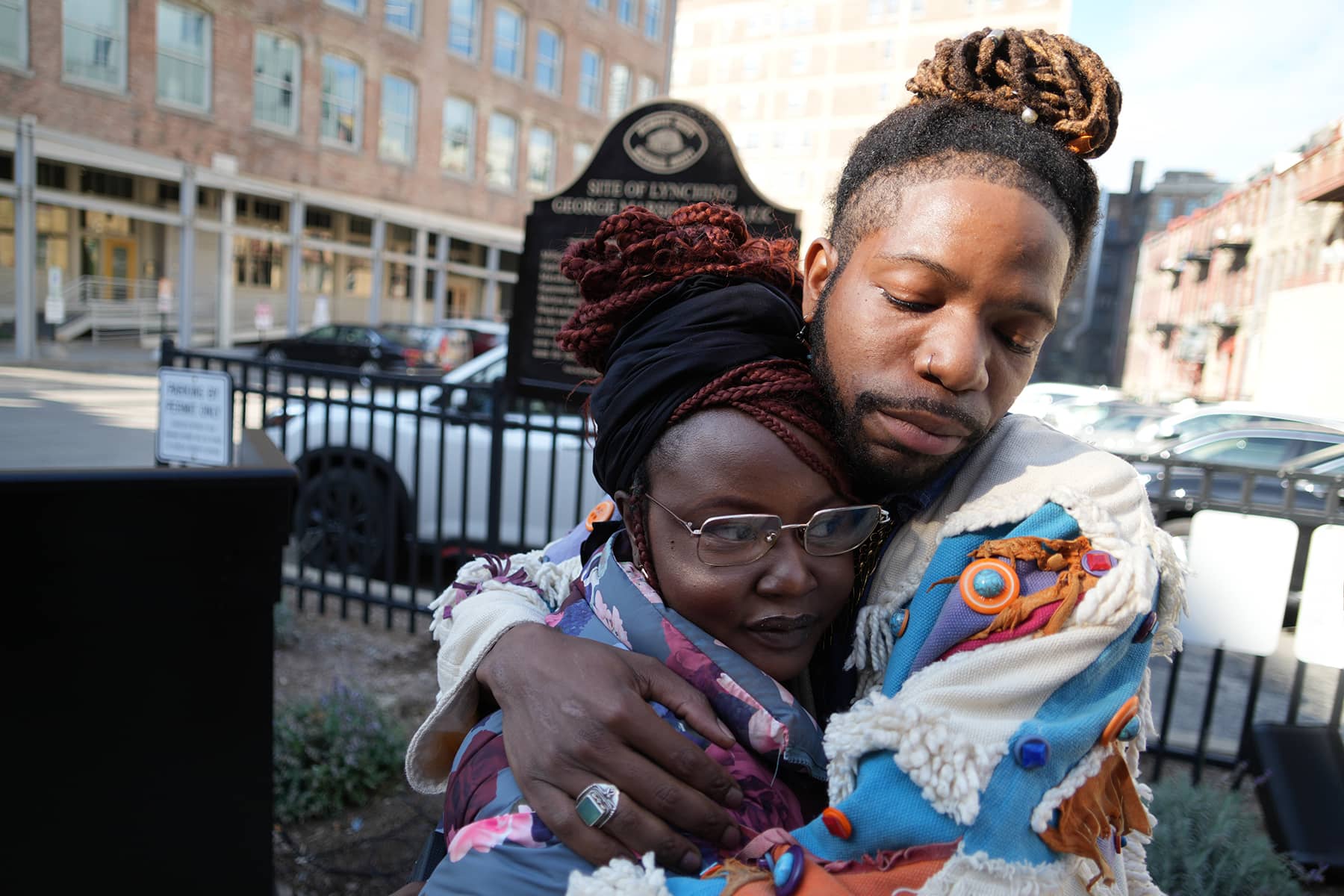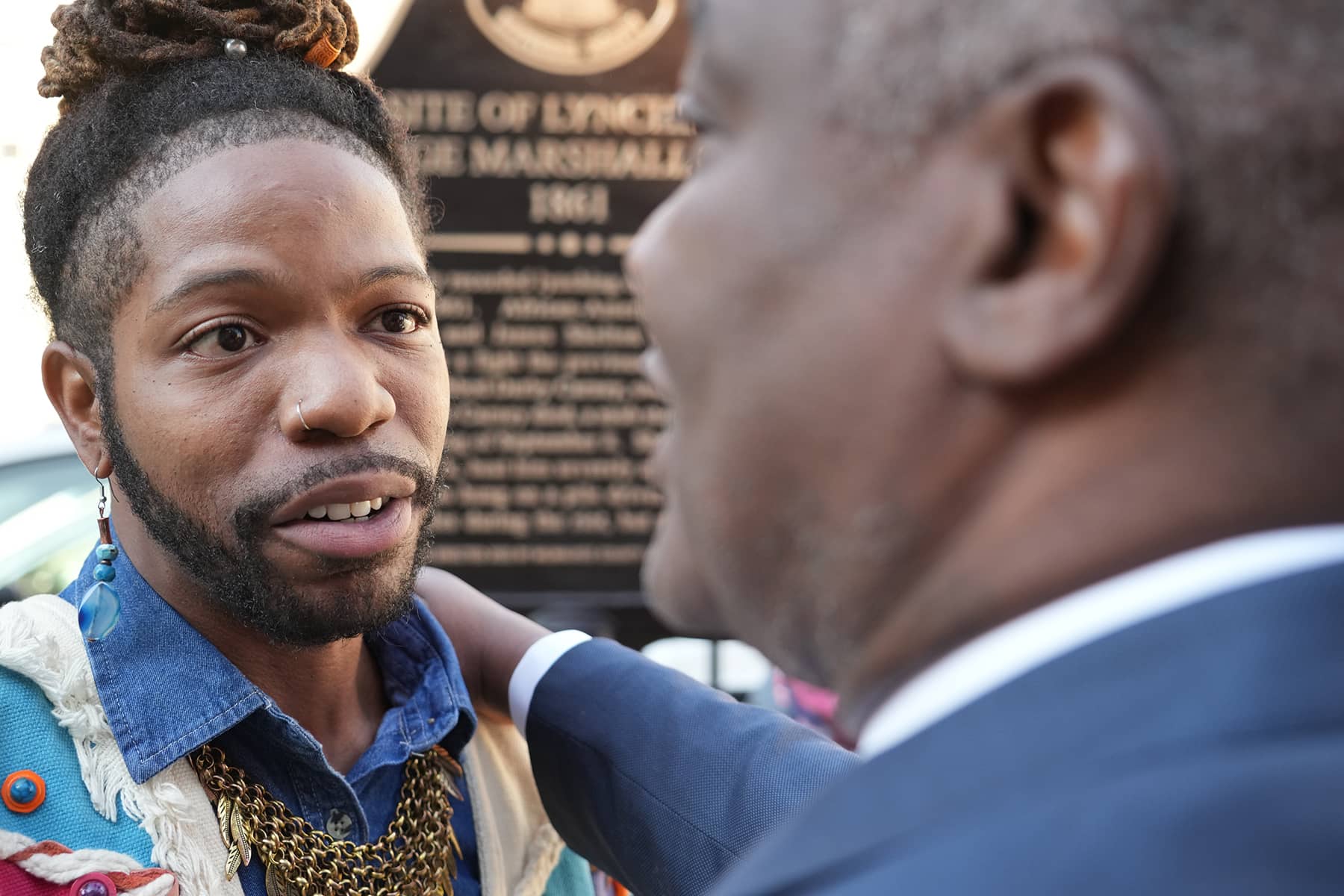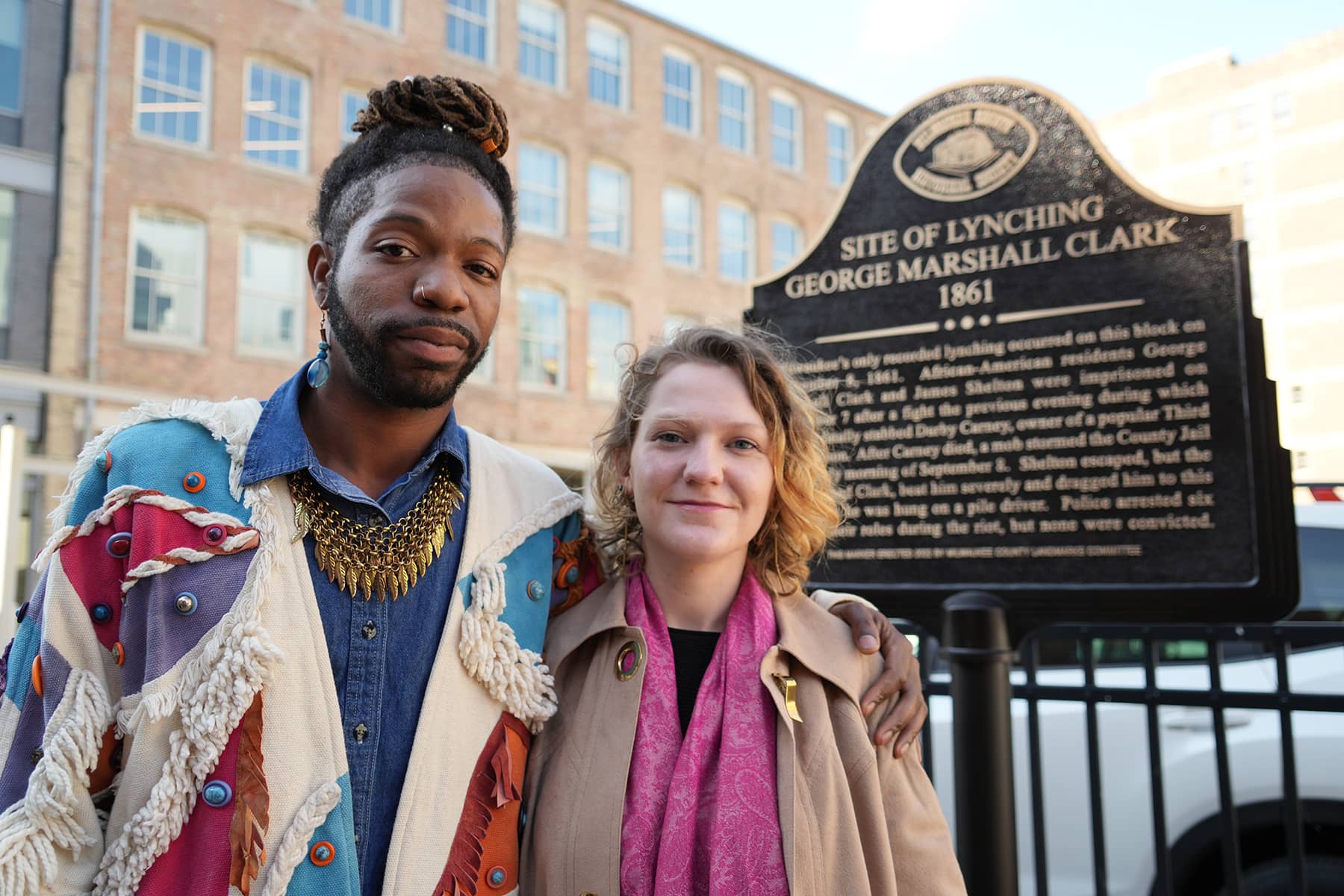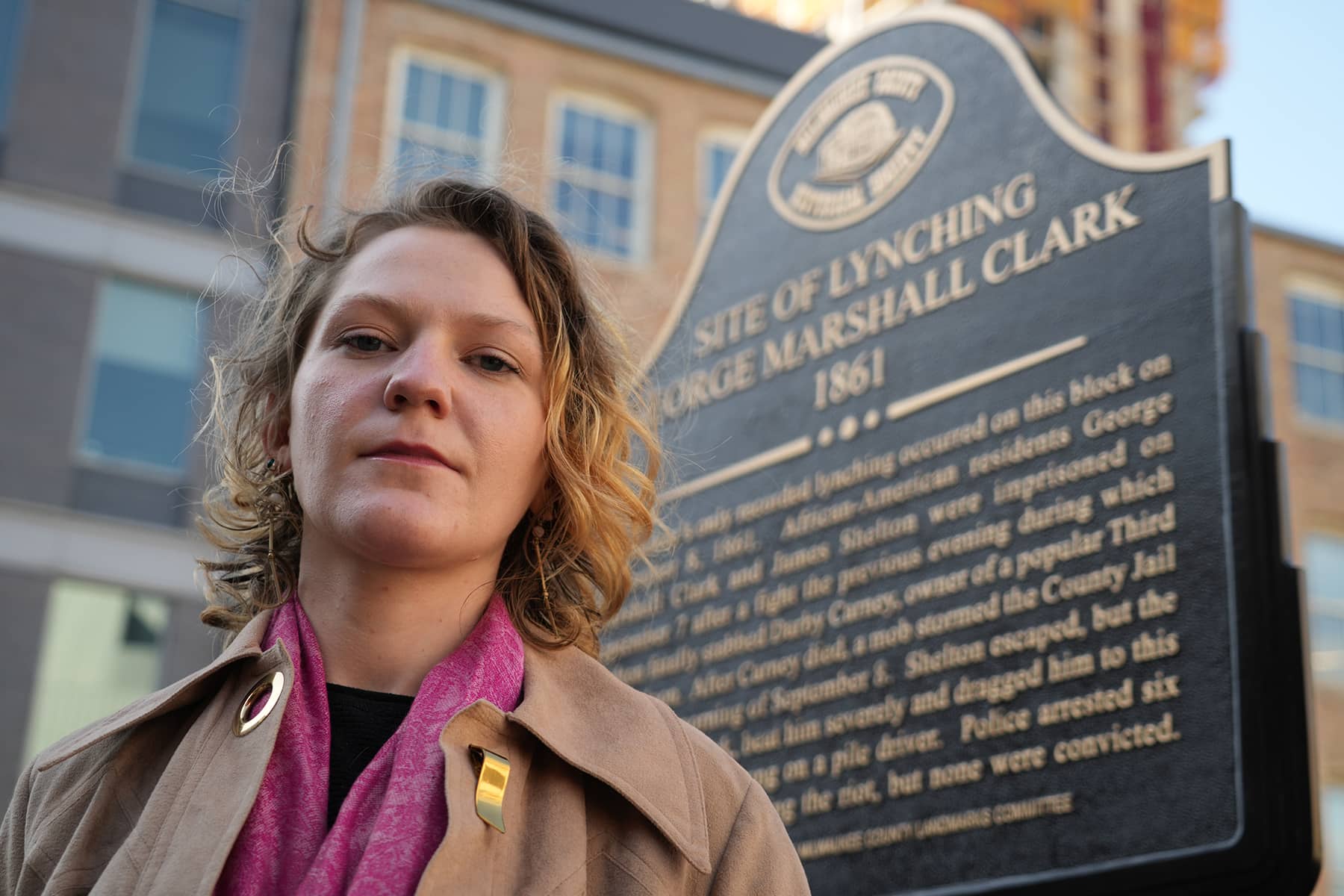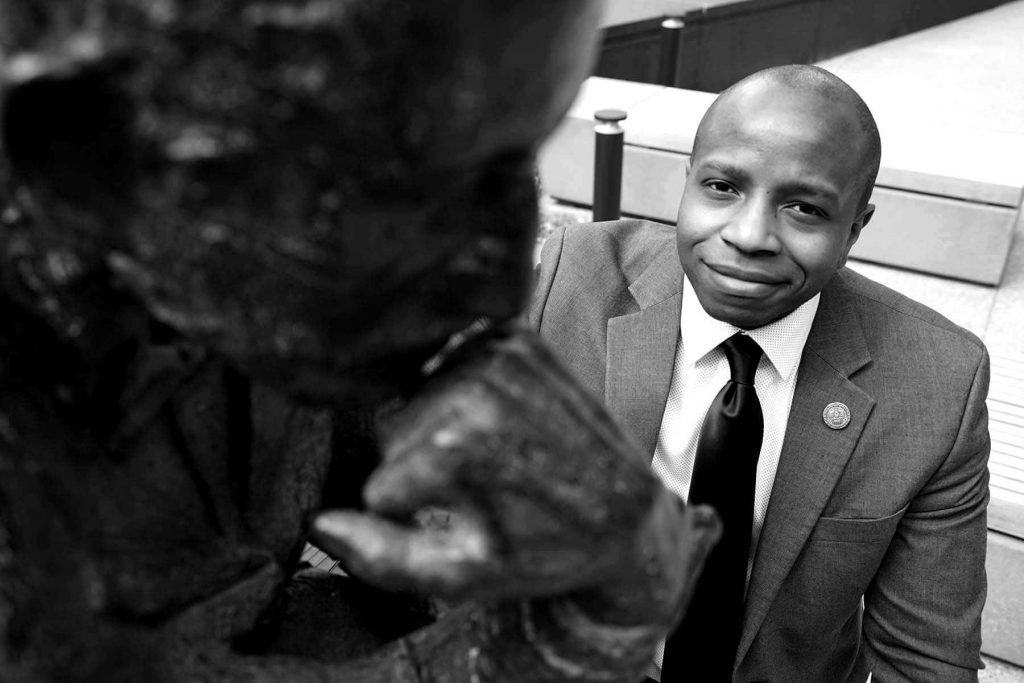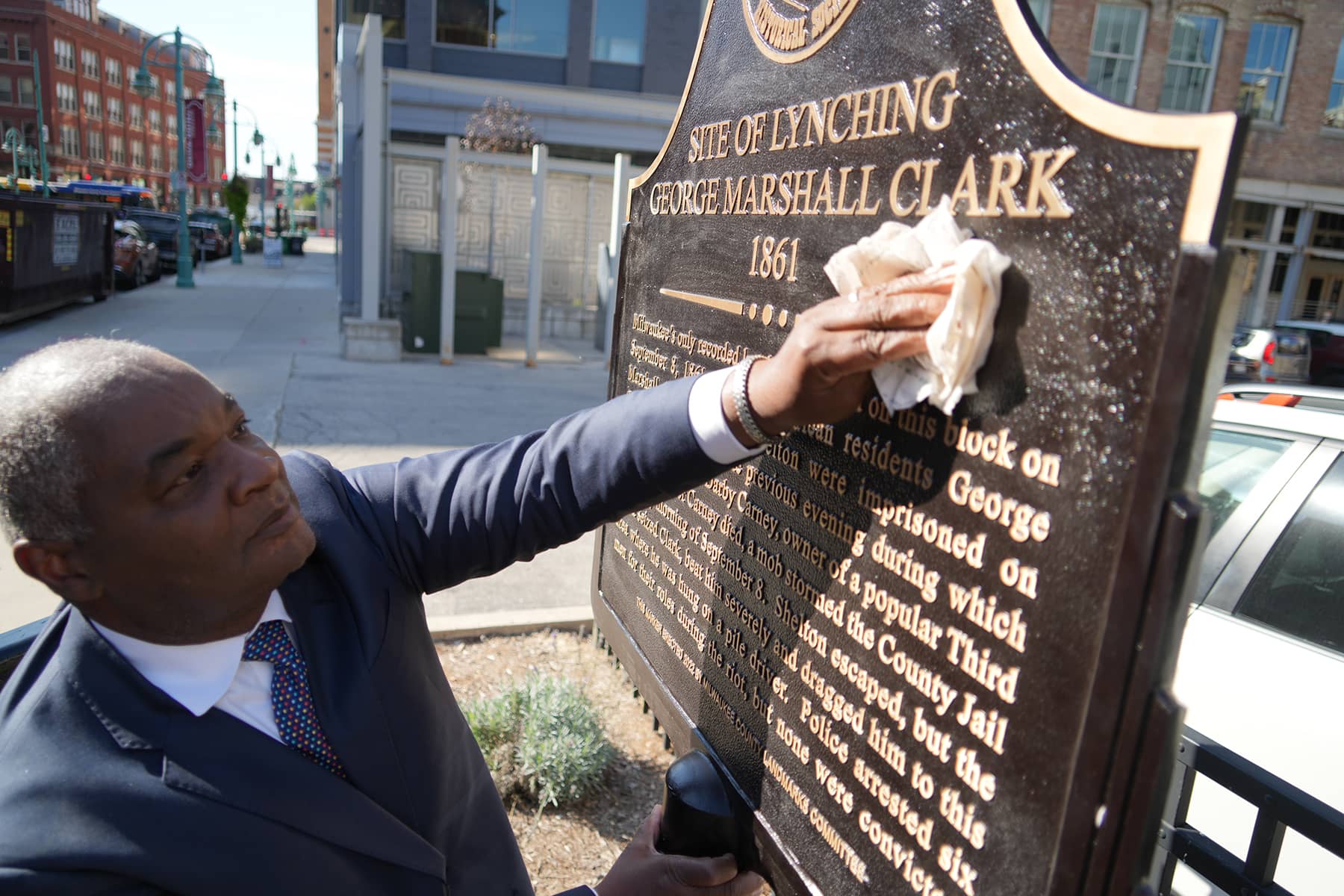
Local officials, area leaders, and members of the community gathered on October 11 in the Third Ward to share a significant moment in Milwaukee County’s history, as a marker was officially dedicated to honor George Marshall Clark, a victim of racial violence who was lynched on September 8, 1861.
The dedication ceremony was organized by the Milwaukee County Landmarks Committee, part of the Milwaukee County Historical Society, and it marked a vital step forward in acknowledging the past, promoting social justice, and preserving the memory of George Marshall Clark – along with all those who suffered under the shadow of racial discrimination.
The unveiling of the marker took place at the site where he met a tragic and unjust end 162 years ago, in the early days of the Civil War.
[Historical Marker Text]: “Site of lynching George Marshall Clark 1861. Mikaukee’s only recorded lynching occurred on this block on September 8, 1861. African-American residents George Marshall Clark and James Shelton were imprisoned on September 7 after a fight the previous evening during which Shelton fatally stabbed Darby Carney, owner of a popular Third Ward saloon. After Carney died, a mob stormed the County Jail in the early morning of September 8. Shelton escaped, but the crowd seized Clark, beat him severely and dragged him to this area where he was hung on a pile driver. Police arrested six men for their roles during the riot, but none were convicted.” – Milwaukee Historical Society
While the 1854 capture of fugitive slave Joshua Glover and his escape from Milwaukee’s courthouse, assisted by members of the local community, was well documented and acknowledged with historical markers, the only lynching to take place in the city had remained mostly unknown to the general public. Of the sixteen documented lynchings that took place in Wisconsin, George Marshall Clark’s lynching was the only such occurrence in Milwaukee’s history.
“As we unveil this plaque, let us also unveil a commitment to change. Let us remember not only the pain but also the strength that brought us together today. Let us remember the importance of unity, understanding, and the fight against racism,” said Randy Bryant, Chairman of the Milwaukee County Landmarks Committee. “We have come to understand that we do not want to live with racism. Now, let us learn how to live in harmony, in respect of one another. Let this plaque not only be a symbol of a dark past, but also a beacon of hope for a brighter and more equitable future.”
The lynching changed the course of history for Milwaukee’s African-American families. Bryant said that in honoring George Marshall Clark’s life, and acknowledging the pain he endured, residents of Milwaukee could dedicate themselves to making a better world where such acts like lynching were unthinkable. While the marker project took nearly six years to complete, Bryant was instrumental in seeing that it was finally accomplished.
“We cannot just choose to remember the pieces of our community’s history that shine in a positive light. It is only by recognizing the deep societal impacts of these events, and remembering where we come from, can we begin to heal and honestly look to the future,” said Milwaukee County Executive David Crowley. “My vision for Milwaukee County is that by achieving racial equity we will become the healthiest county in the state of Wisconsin. In 2019, Milwaukee County was the first jurisdiction to declare racism as a public health crisis. And while we have taken incredible strides in advancing racial equity and health equity, we know that our work is far from over.”
County Executive Crowley said that it was a momentous occasion to remember the life of George Marshall Clark. But it was also a very somber moment for him to stand in front of the historical marker as an African American man born and raised in Milwaukee, knowing that there had been a lynching in his hometown.
“This plaque commemorating George Marshall Clark will remind us that we have come a really long way. It also reminds us that we have so far still to go, with all of us collectively working together,” said Mayor Cavalier Johnson. “As we honor George Marshall Clark, let us keep moving forward in a unified way that keeps us focused on a common goal for improving our community.”
Mayor Johnson also thanked Ken Hanson of Hanson Dodge Creative, who donated the parcel of land for the historical marker to be installed.
> READ: Site of the only documented lynching in Milwaukee designated as a County Landmark
The Milwaukee Independent began reporting on George Marshall Clark’s story in 2017. The editorial staff decided that year to nominate the site where he was lynched in 1861 for designation as a historically significant landmark. In the years since, the staff was also involved in the 2021 effort to install a headstone at his grave in historic Forest Home Cemetery.
> READ: George Marshall Clark: Unmarked grave of Milwaukee lynching victim gets headstone after 160 years
“America’s dark history of lynching still affects our society and political policies today,” said Lee Matz, senior photojournalist of Milwaukee Independent. “By marking the site of this lynching in Milwaukee, it encourages a collective acknowledgment of the injustice committed, and helps ensure that such acts of violence are never repeated.”
With the original 2017 nomination, the editorial board of the Milwaukee Independent said that for the city to come to terms with its segregated condition, it was important to acknowledge uncomfortable historical truths. George Marshall Clark’s story was a stark reminder of the systemic racism that has plagued American history.
The long journey to installation was not without its many challenges. From the nomination in 2017, and the fight for approval in 2018, to raising funds for the marker’s production, and the effort to obtain permission from private landowners for the location of its installation.
George Marshall Clark’s father moved to Milwaukee in 1847, one year before Wisconsin was admitted to the Union as a free state. He became a successful barber and a respected leader in the Black community. Many Blacks settled in Milwaukee because of the city’s reputation as a center of abolitionist settlements, with significant ties to the Underground Railroad.
“History did not record who cut Marshall down, but likely it was his family. They brought his body to Forest Home Cemetery, where his name, birth and death dates, and the manner of his death – murder, can still be read in faded handwriting. Like many other lynching victims, Clark was buried in an unmarked grave. The Clark family left Milwaukee. Understandably, Black families often picked up and moved overnight from the site of a lynching, refugees from racial terror forced to leave behind jobs, property, family, and friends.”
Research about social trauma, particularly with violence against the Black community, has shown that acknowledgment – in the form of historical markers – can be of social and economic benefit. Designating the spot where George Marshall Clark was lynched in Milwaukee County was important for several reasons.
“Such markers can serve as educational tools to inform the public about the history of racial violence, segregation, and discrimination. They provide an opportunity to teach future generations about the importance of civil rights, social justice, and the ongoing struggle for equality. Markers at lynching sites serve as memorials to the victims of racial violence. They provide a space for reflection, remembrance, and healing for the affected communities and the broader public. Installing a marker can be seen as a symbolic gesture of reconciliation of the pain and suffering caused by racial violence. It can help foster dialogue and understanding between different communities. Markers help preserve historical sites and ensure that the stories of individuals like George Marshall Clark are not forgotten. This preservation of history is essential for understanding the broader context of racial discrimination in the United States. The installation of a marker can be part of a broader effort to address systemic racism and work toward a more just and equitable society. It sends a message that communities are willing to confront their history and strive for positive change.”
The installation of the marker on October 11 was part of a broader effort in Milwaukee County and across the nation to confront the legacy of racism and promote social change.
The George Marshall Clark marker also signified a commitment to acknowledging the past, educating the present, and forging a better future for all residents of Milwaukee County.
The collection of news articles published by Milwaukee Independent about George Marshall Clark can be found on a special Milwaukee Lynchings landing page. mkeind.com/georgemarshallclark
Lee Matz

